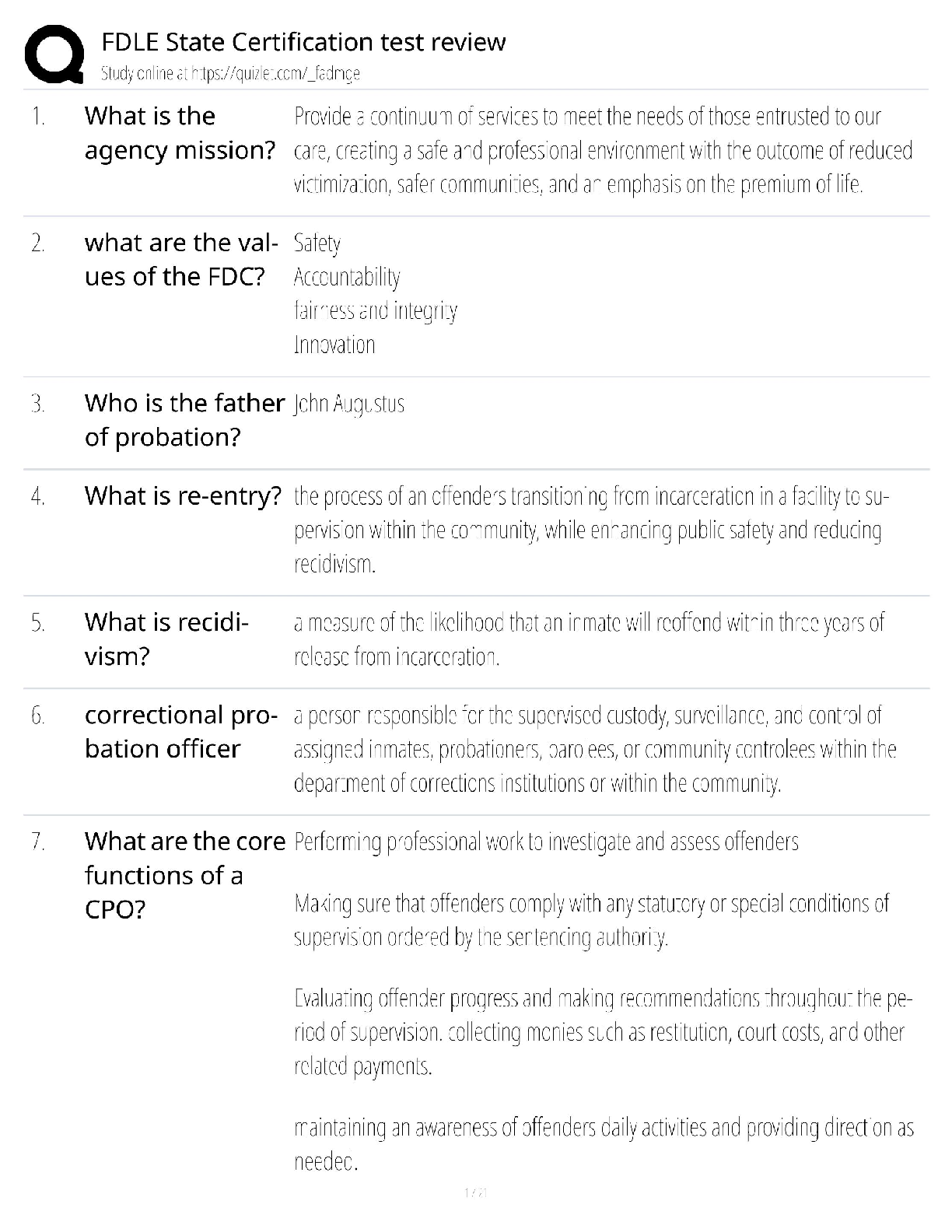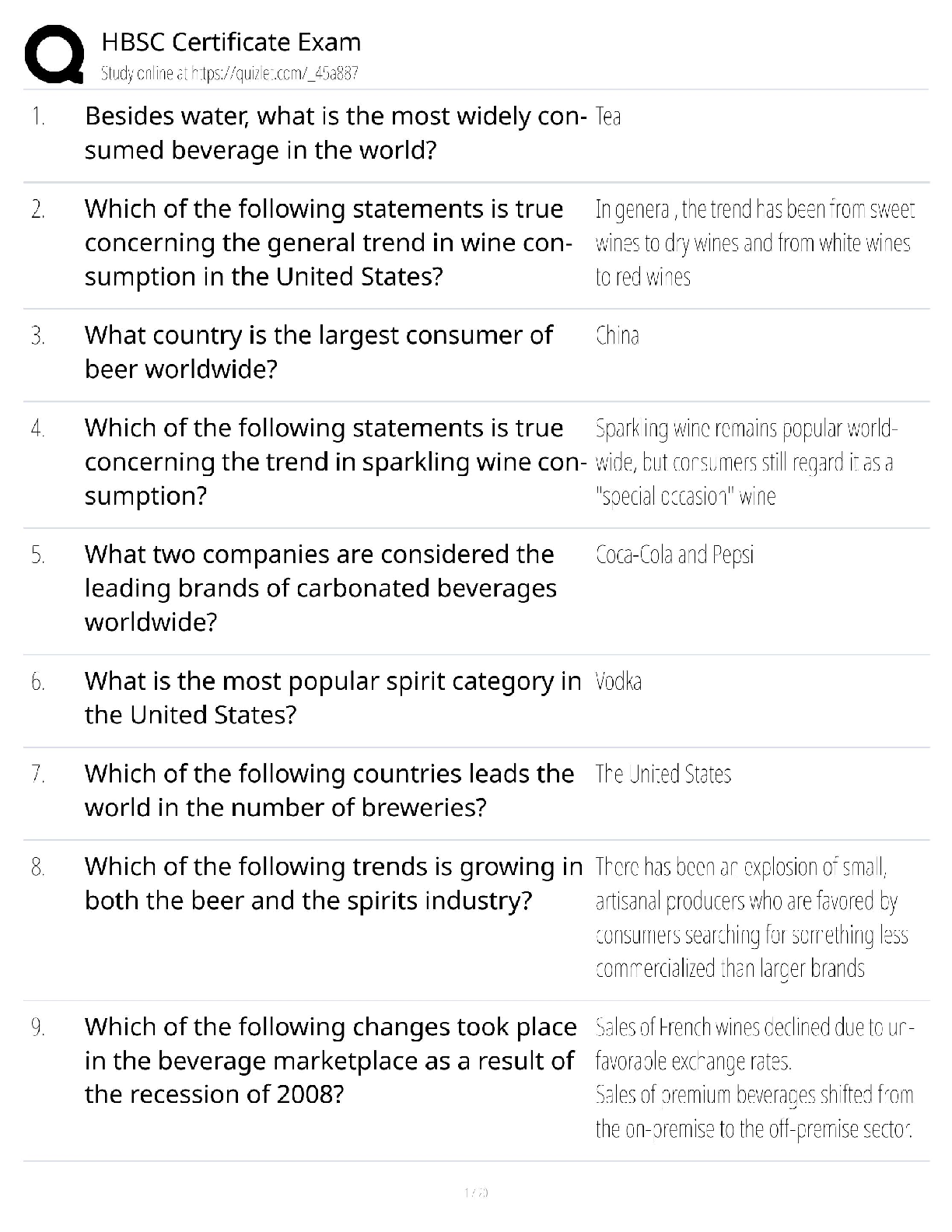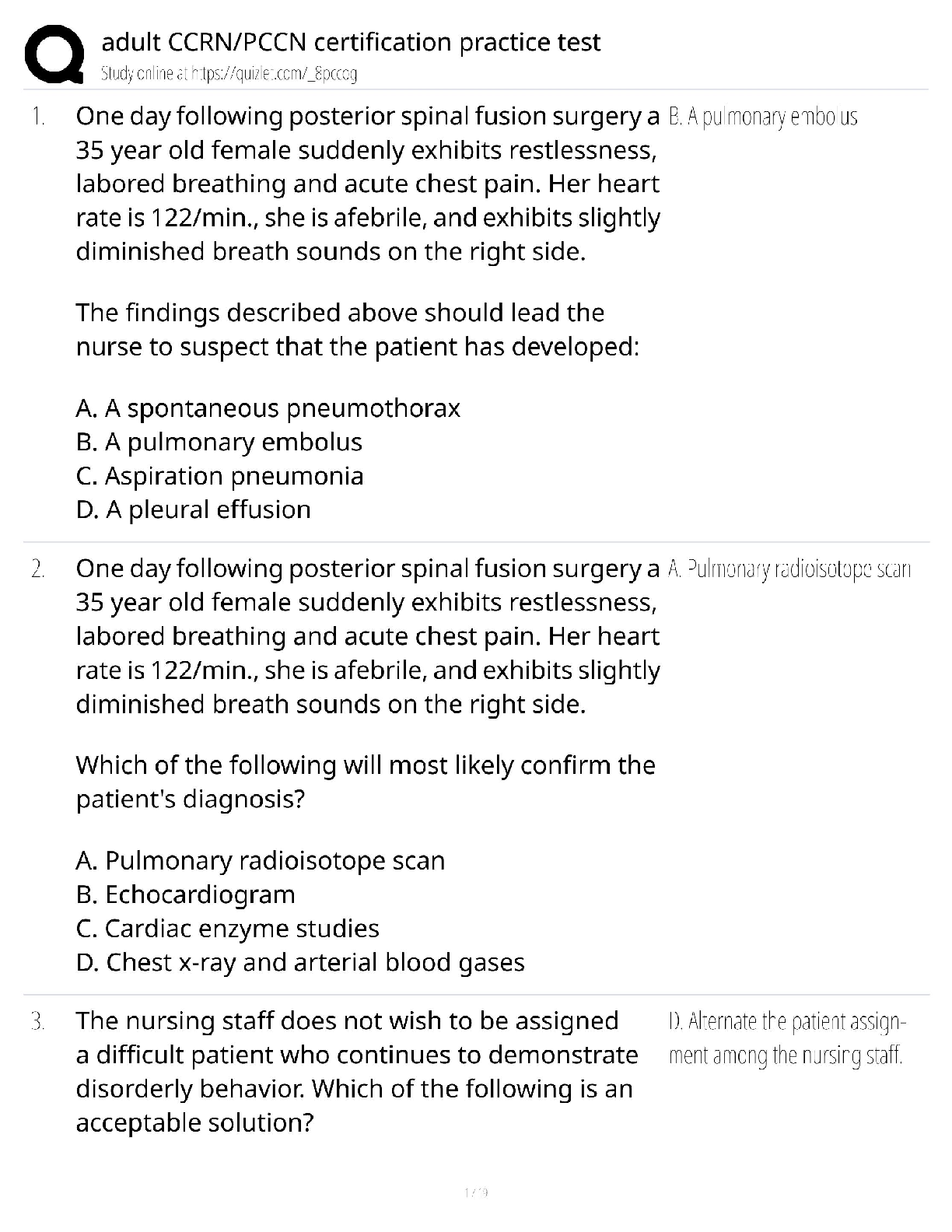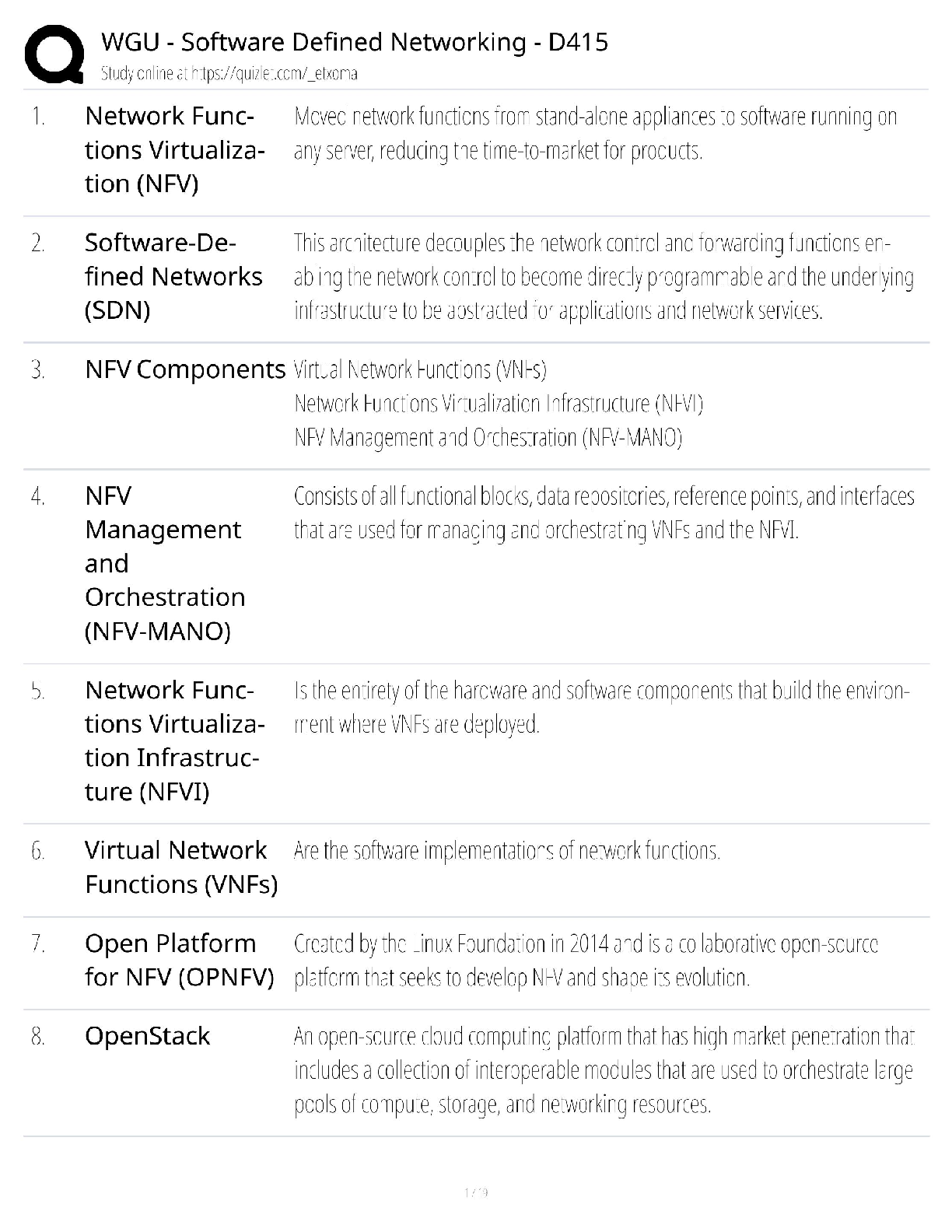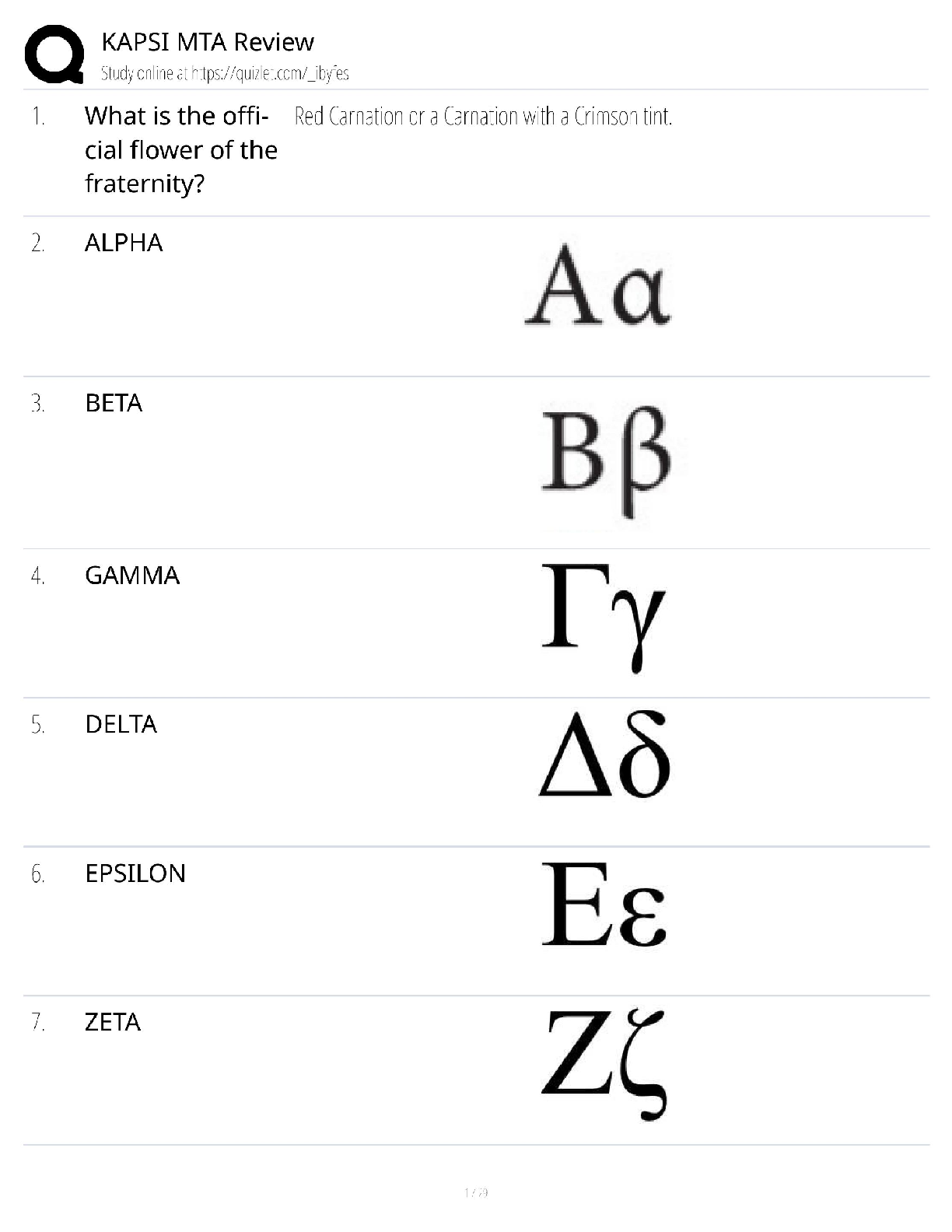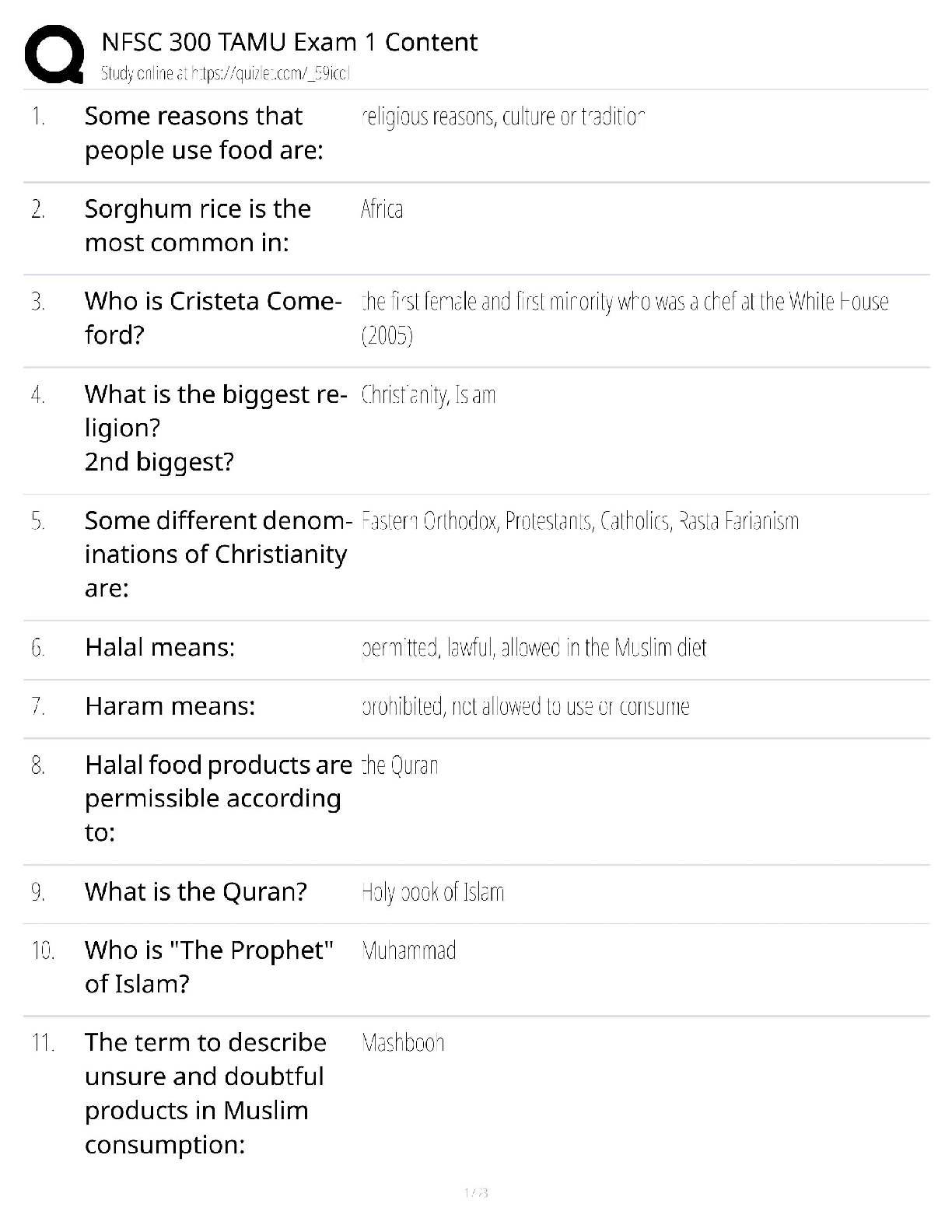Financial Accounting > QUESTIONS & ANSWERS > Week 8 trial questions and answers solution updated solution 2020 (All)
Week 8 trial questions and answers solution updated solution 2020
Document Content and Description Below
Week 8 trial questions and answers solution updated solution 2020 (TCO E) Preparing purchase orders is a(n) (Points : 5) batch-level activity. product-level activity. unit ... -level activity. organization sustaining activity. 2. (TCO G) Given the following data, what would ROI be? Sales $70,000 Net operating income $10,000 Contribution margin $20,000 Average operating assets $50,000 Stockholder's equity $25,000 (Points : 5) 28.6% 20.0% 40.0% 50.0% 3. (TCO C) Heckaman Corporation produces and sells a single product. Data concerning that product appear below. Selling price per unit $115.00 Variable expense per unit $56.35 Fixed expense per month $299,115 Required: Determine the monthly breakeven in unit or dollar sales. Show your work! (Points : 25) Solution: Break-even in dollars = fixed costs/ (P - V)/P = 299,115/(115.00 - 56.35)/56.35 = 299,115/1.04082 Break-even = $287,385 4. TCO B) Industrial Supply Corporation uses the weighted-average method in its process costing system. Data concerning the first processing department for the most recent month are listed below. Work in process, beginning: Units in beginning work in process inventory 400 Materials costs $6,900 Conversion costs $2,500 Percent complete for materials 80% Percent complete for conversion 15% Units started into production during the month 6,000 Units transferred to the next department during the month 5,200 Materials costs added during the month $112,500 Conversion costs added during the month $210,300 Ending work in process: Units in ending work-in-process inventory 1,200 Percentage complete for materials 75% Percentage complete for conversion 30% Required: Calculate the equivalent units for conversion for the month in the first processing department. (Points : 25) Solution: Equivalent units using WAM = Units transfered to the next department during the month + Ending inventory (percentage of completion) Ending inventory completed as to conversion =30% x 1,200 = 360 units Equivalent units as to conversion= 5,200 + 360 =5,560 units 5. (TCO D) Topple Company produces a single product. Operating data for the company and its absorption costing income statement for the last year are presented below. Units in beginning inventory 0 Units produced 9,000 Units sold 7,000 Sales $100,000 Less cost of goods sold: Beginning inventory 0 Add cost of goods manufactured 54,000 Goods available for sale 54,000 Less ending inventory 12,000 Cost of goods sold 42,000 Gross margin 58,000 Less selling and admin. expenses 28,000 Net operating income $30,000 Variable manufacturing costs are $4 per unit. Fixed manufacturing overhead totals $18,000 for the year. The fixed manufacturing overhead was applied at a rate of $2 per unit. Variable selling and administrative expenses were $1 per unit sold. Required: Prepare a new income statement for the year using variable costing. Comment on the differences between the absorption costing and the variable costing income statements. (Points : 30) Solution: Solution Sales $100,000 Less : Variable Cost Beginning Inventory 0 Add : Cost of Goods Manufactured $36,000 (9,000 x $4) Goods available for Sale $36,000 Less : Ending inv. 2,000 x $4 $8,000 Cost of goods Sold $28,000 Less : Variable Selling & admin. (7,000 x $1) $7,000 Total Variable costs $35,000 Contribution $65,000 Less : Fixed Costs Manufacturing overheads $18,000 Selling & admin.Exp.$28,000-$7,000 $21,000 $39,000 Net Operating Income $26,000 Net Operating Income under absorption costing is $30,000 whereas under Variable costing it comes out as $26,000. The reason of this difference of $4,000 is due to Ending inventory charged @$6 under Absorption costing whereas under Variable costing only variable cost $4 has been considered. The difference is 2,000 x ($6 - $4) = $4,000. 6. (TCO I) (Ignore income taxes in this problem.) Simpson Beauty Products Corporation is considering the production of a new conditioning shampoo that will require the purchase of new mixing machinery. The machinery will cost $700,000, is expected to have a useful life of 10 years, and is expected to have a salvage value of $70,000 at the end of 10 years. The machinery will also need a $45,000 overhaul at the end of Year 5. A $60,000 increase in working capital will be needed for this investment project. The working capital will be released at the end of the 10 years. The new shampoo is expected to generate net cash inflows of $150,000 per year for each of the 10 years. Simpson's discount rate is 18%. Required: Part A: What is the net present value of this investment opportunity? Part B: Based on your answer to (a) above, should Simpson go ahead with the new conditioning shampoo? (Points : 30) Solution: PART A: Net Present Value: Depreciation expense = (700,000 – 70,000)/10 = $63,000 per year Present Value of major Overhaul at year 5 = 45,000 x 1.18^-5 = $19,669.50 Present Value of working capital recovered = 60,000 x 1.18^-10 = $11,466 Present Value of salvage value = 70,000 x 1.18^-10 = $13,377 Net cash flows generated per year = cash inflows – depreciation = 150,000 – 63,000 = $87,000 Present value of net cash inflows = 87,000 x 4.4941 (from annuity tables) = $390,986.70 NPV = Present value of cash inflows – Present value of cash outflows NPV = (390,986.70 + 11,466 + 13,377) – (700,000 + 19,669.50 + 60,000) = -$363,839.80 PART B: Simpson should not go ahead and purchase the shampoo machine since the NPV is negative. 7. (TCO A) The following data (in thousands of dollars) have been taken from the accounting records of Karmana Corporation for the just-completed year. Sales ...............................................................................................$1,500 Raw materials inventory, beginning ...............................................$20 Raw materials inventory, ending ..........................,.........................$40 Purchases of raw materials .............................................................$150 Direct labor .......................................................................................$180 Manufacturing overhead ...............................................................$250 Administrative expenses ...............................................................$100 Selling expenses .............................................................................$140 Work-in-process inventory, beginning ........................................$80 Work-in-process inventory, ending .............................................$50 Finished goods inventory, beginning ........................................$125 Finished goods inventory, ending ...............................................$60 Use these data to prepare (in thousands of dollars) a schedule of Cost of Goods Manufactured and a Schedule of Cost of Goods Sold for the year. In addition, elaborate on the relationship between these schedules as they relate to the flow of product costs in a manufacturing company. (Points : 25) Solution: Cost of goods Manufactured: Materials Cost Beginning raw materials cost 20 Raw materials purchase 150 Ending raw materials inventory (40) Cost of raw materials 130 Direct labor cost 180 Manufacturing overheads 250 Total manufacturing costs 560 Beginning Work-in progress 80 Total manufacturing costs 640 Ending Work progress (50) Cost of goods Manufactured 590 Cost of goods sold section: Beginning finished goods 125 Add: Cost of goods manufactured 590 Less: Ending Finished goods (60) Cost of goods sold 655 The cost of goods manufactured schedule should be first be prepared before preparing the cost of goods sold section. This is because the cost of goods manufactured amount is included as part of the finished goods in determining the cost of goods sold. 8. (TCO F) Matuseski Corporation is preparing its cash budget for October. The budgeted beginning cash balance is $54,000. Budgeted cash receipts total $127,000 and budgeted cash disbursements total $99,000. The desired ending cash balance is $100,000. The company can borrow up to $150,000 at any time from a local bank, with interest not due until the following month. Required: Prepare the company's cash budget for October in good form. Make sure to indicate what borrowing, if any, would be needed to attain the desired ending cash balance. (Points : 25) Solution: Beginning cash balance $54,000 Add: Cash receipts $127,000 Available cash balance $181,000 Less: Cash disbursements $99,000 Total ending cash balance $82,000 Desire balance $100,000 Loan from local bank $18,000 Additional Funds Needed are $18,000 9.(TCO F) Bella Lugosi Holdings, Inc. (BLH), has collected the following operating information for its current month's activity. Using this information, prepare a flexible budget analysis to determine how well BLH performed in terms of cost control. Actual Costs Incurred Static Budget Activity level (in units) 5,250 5,178 Variable costs: Indirect materials $24,182 $23,476 Utilities $22,356 $22,674 Fixed costs: Administration $63,450 $65,500 Rent $65,317 $63,904 (Points : 25) Solution: Budgeted Actual Variance Variable costs: Indirect materials 23,476 24,182 -706 Utilities 22,674 22,356 318 -388 Fixed costs: Administration 65,500 63,450 2,050 Rent 63,904 65,317 -1,413 637 Total variance = -388 + 637 = $249 There was a total positive variance of the total costs incurred by the company since the total budgeted costs were higher than the actual costs by $249 meaning the company performed better than its budgeted costs and spent less than what the company had estimated. 10. (TCO H) Lindon Company uses 10,000 units of Part Y each year as a component in the assembly of one of its products. The company is presently producing Part Y internally at a total cost of $100,000 as follows. Direct materials............................................... $20,000 Direct labor...................................................... 40,000 Variable manufacturing overhead...................... 16,000 Fixed manufacturing overhead....................... 24,000 Total costs.......................................................100,000 An outside supplier has offered to provide Part Y at a price of $10 per unit. If Lindon stops producing the part internally, one third of the fixed manufacturing overhead would be eliminated. Required: Should Lindon Company make or buy the part? Prepare a make-or-buy analysis showing the annual advantage or disadvantage of accepting the outside supplier's offer. (Points : 30) Solution: If the company purchases the part Y: Total cost = $10 x 10,000 = $100,000 Fixed manufacturing cost saved = 1/3 x 24,000 = $8,000 Net Cost of buying from outside = $100,000 - $8,000 = $92,000 The company should buy the part Y from outside since it will save the $8,000 on the fixed manufacturing costs rather than producing the component at $100,000. 11. (TCO B) Wahr Corporation bases its predetermined overhead rate on the estimated labor hours for the upcoming year. At the beginning of the most recently completed year, the company estimated the labor hours for the upcoming year at 35,000. The estimated variable manufacturing overhead was $7.25 per labor hour and the estimated total fixed manufacturing overhead was $585,000. The actual labor hours for the year turned out to be 33,000. Required: Compute the company's predetermined overhead rate for the recently completed year. (Points : 25) Solution: Predetermined rate = Total manufacturing overheads/Activity level = $585,000/35,000 labor hours = $16.71 per direct labor hour [Show More]
Last updated: 3 years ago
Preview 1 out of 8 pages

Buy this document to get the full access instantly
Instant Download Access after purchase
Buy NowInstant download
We Accept:

Reviews( 0 )
$5.50
Can't find what you want? Try our AI powered Search
Document information
Connected school, study & course
About the document
Uploaded On
Nov 11, 2020
Number of pages
8
Written in
All
Additional information
This document has been written for:
Uploaded
Nov 11, 2020
Downloads
0
Views
75

 answers.png)












